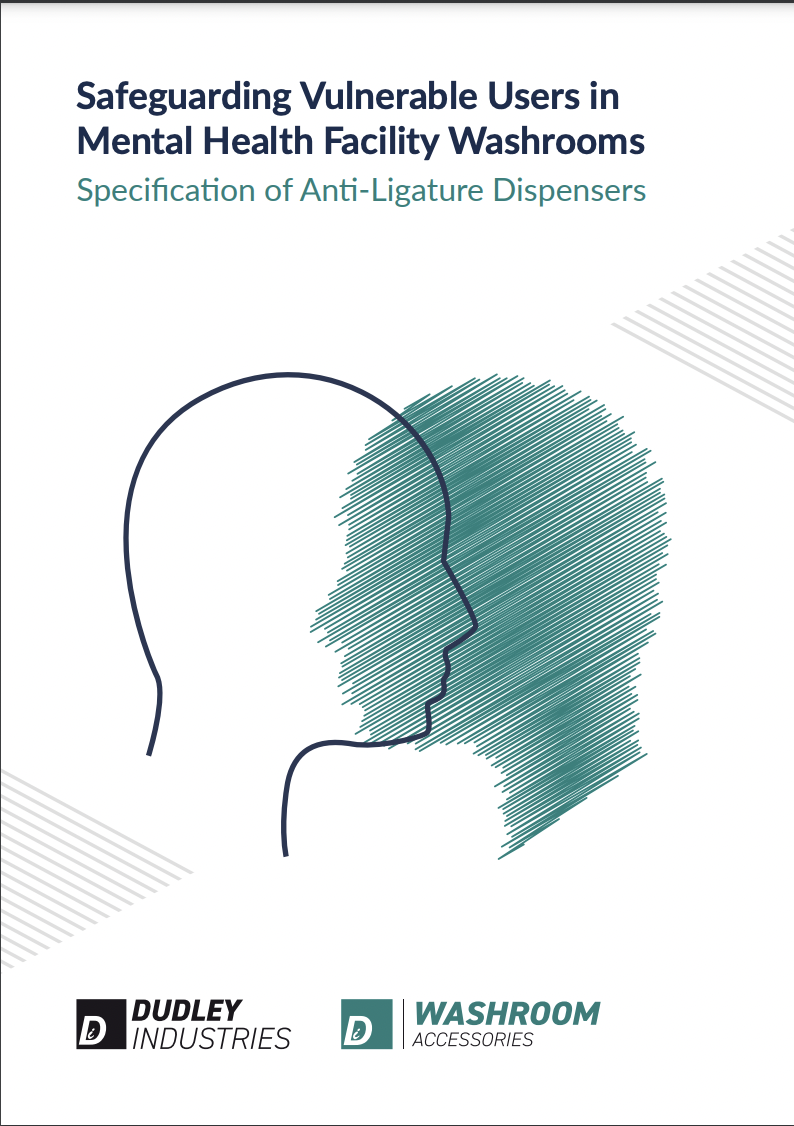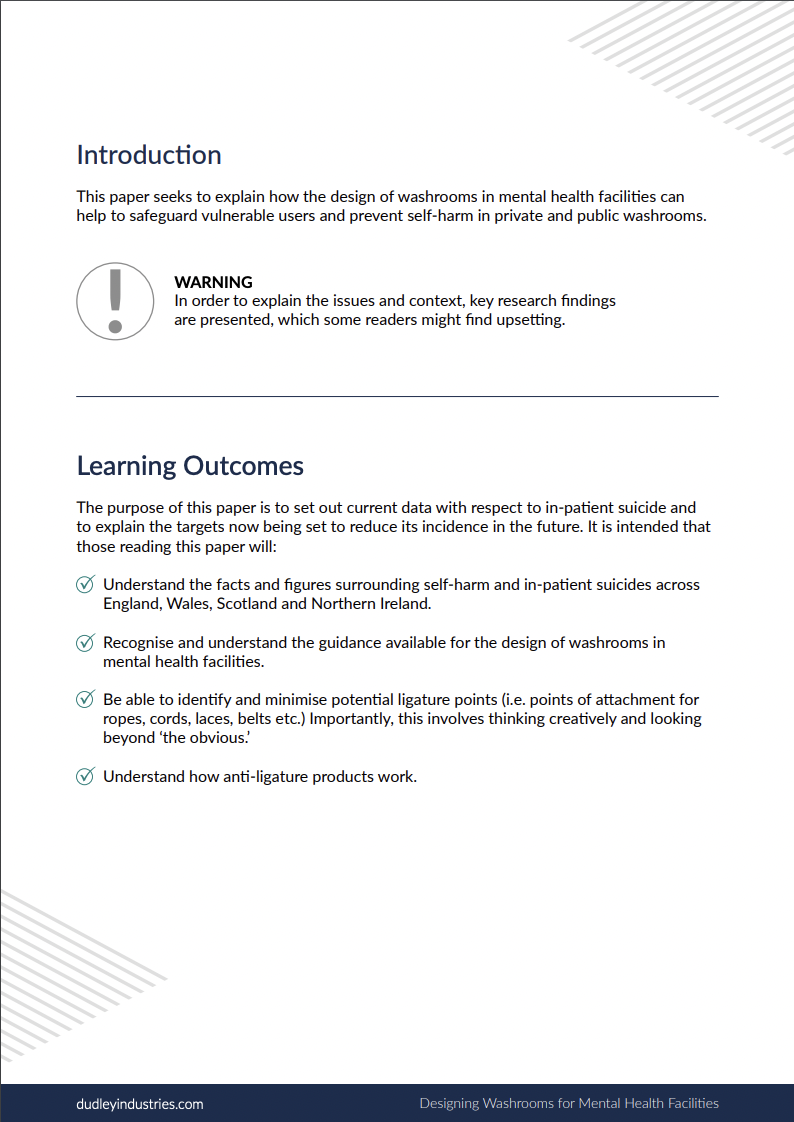Safeguarding Vulnerable Users in Mental Health Facility Washrooms
Washrooms and shower rooms rightly ensure privacy and dignity for users. However, it's essential to exercise extra caution in safeguarding vulnerable individuals in these high-risk areas to prevent any potential harm to themselves or others.
There is increasing evidence that well-designed accommodation for patients and staff not only improves safety but also enhances the process of regaining health. Our comprehensive guide is packed with valuable insights and practical tips to enhance designer knowledge of room features to which a ligature could be attached, helping to reduce the risk of in-patient self-harm or suicide. This guide also explores how anti-ligature products work, provides design guidance for healthcare buildings and discusses the importance of designing washrooms with vulnerable adults and young people in mind.
What will you gain from this guide?
- Understand the facts and figures surrounding self-harm and in-patient suicides.
- Recognise and understand the guidance available for the design of washrooms in mental health facilities.
- Be able to identify and minimise potential ligature points.
- Understand how anti-ligature products work.


Who will benefit from this guide?
This paper has been put together as guidance available for mental health trusts and private care providers, designers of healthcare facilities, architects, and specifiers. This handbook will equip you with the valuable knowledge you need to safeguard vulnerable users and prevent self-harm in private and public washrooms.